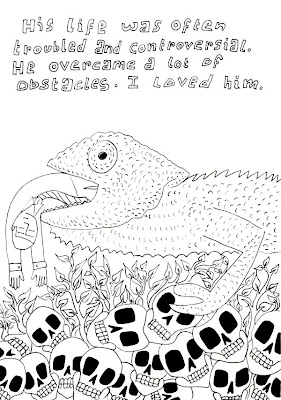

I quote Robert E. Remez:
Sine-wave speech is an intelligible synthetic acoustic signal composed of three or four time-varying sinusoids. Together, these few sinusoids replicate the estimated frequency and amplitude pattern of the resonance peaks of a natural utterance (Remez et al., 1981). The intelligibility of sine-wave speech, stripped of the acoustic constituents of natural speech, cannot depend on simple recognition of familiar momentary acoustic correlates of phonemes. In consequence, proof of the intelligibility of such signals refutes many descriptions of speech perception that feature canonical acoustic cues to phonemes. The perception of the linguistic properties of sine-wave speech is said to depend instead on sensitivity to acoustic modulation independent of the elements composing the signal and their specific auditory effects.
The ability of listeners to integrate asynchronously varying, harmonically unrelated tones into a single perceptual stream also has posed a strong challenge to accounts of auditory perceptual organization. Perceptual organization is the function by which auditory experience is resolved into individual sensory streams, each issuing from a distinct source. In standard accounts, stream formation occurs by grouping similar auditory sensory elements into streams, a proposal that owes much to the Gestalt principles of figural organization (Wertheimer, 1923). Although sine-wave speech is coherent perceptually, neither sine-wave components nor their respective sensory properties are similar to each other at the fine acoustic grain described in the Gestalt-based account. For this reason, sine-wave speech requires an alternative account of perceptual organization that depends instead on sensitivity to coordinate variation, transcending the details of elementary signal properties and their isolated auditory effects. Research has exploited these properties of sine-wave speech to examine perceptual organization of a spoken auditory scene, perceptual analysis of the linguistic properties of utterances, and the perceptual identification of individual talkers.
Although numerical methods of automatic estimation have been used to derive frequency and amplitude values for synthesizing sine-wave speech, these techniques are prone to error and the estimates they provide require extensive correction before they are suitable for use as synthesis parameters. Accordingly, old fashioned practices of acoustic analysis are often used in which a phonetician inspects a spectral display and picks frequency and amplitude values by hand for this form of copy synthesis.
What on earth is up with the word 'asynchronously'? It is brilliant. This text is not only highly informative, its lyrical value is priceless. Let us all feast on literacy and embrace this new sonorific vocabulary. Who else to celebrate vocality with than Julie Andrews. That is a picture speaking for itself, in all senses of the word.
This summer, while I was undergoing the torture of imposed silence for three weeks, I made a song about muteness. I hope you enjoy my musical expression of laconism. The voice sample is pre morbus.(Intense synonyms all the way.)

































1.jpg)










